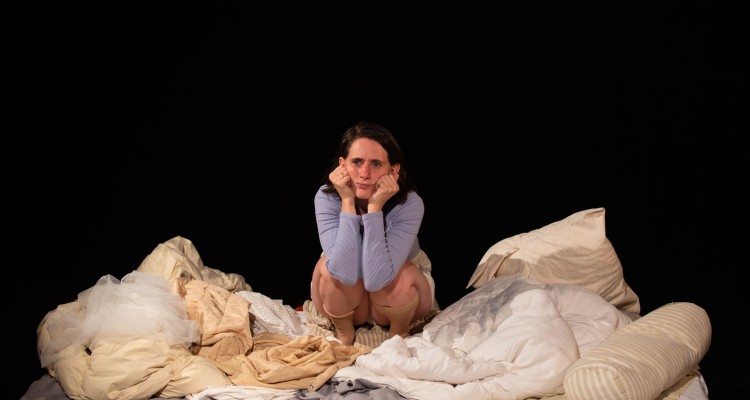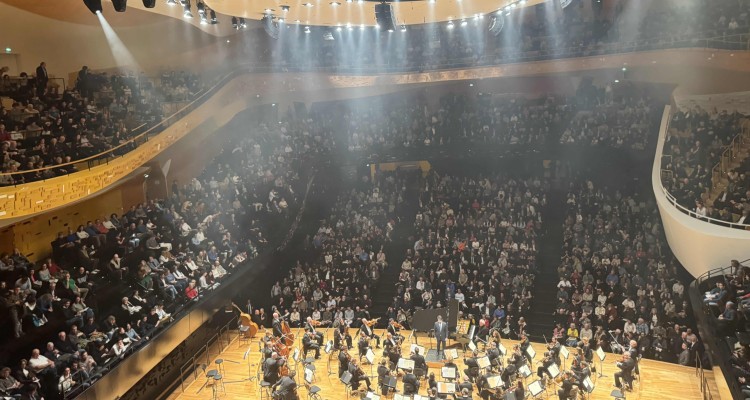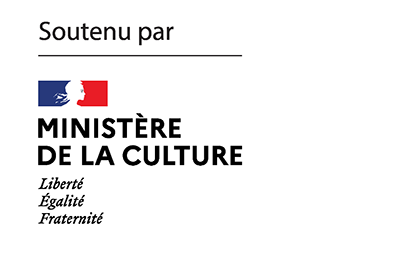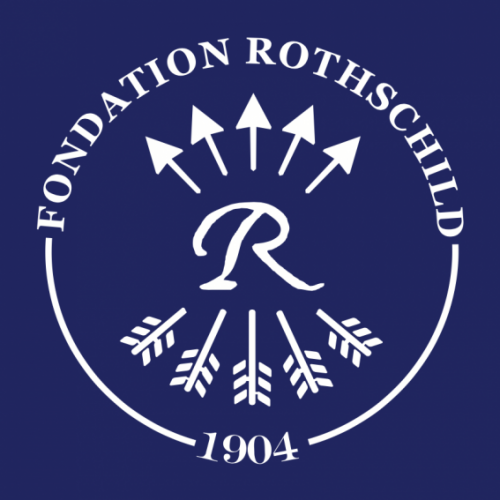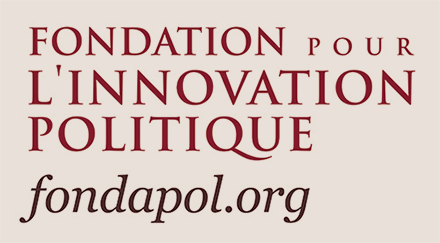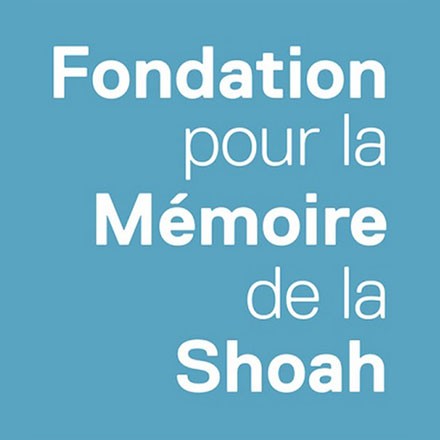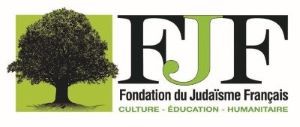While Proust was not raised in the Jewish religion, much of his education bore the imprint of a social and cultural Judaism. But can he be read as a Jewish writer? Can we detect the influences of the Talmud or Kabbalah in his opus, In Search of Lost Time (French: A la Recherche du temps perdu)?

A sentence from Proust has often been cited, despite the fact that its origin long remained obscure. Proust, whose maternal line was Jewish, deplores the fact that no one can visit the grave of his great-grandfather in the Père-Lachaise cemetery in order to place the ritual stone on the tombstone. Not even Proust could go there at the time of his lament, as he was sick and bedridden, and then near the end of his life. He had done so in times past, visiting the grave as a child with his grandfather Nathé. Antoine Compagnon managed to determine the origin of the quotation in the course of research that he presented at a seminar on Proust’s Jewishness, held last year at the Collège de France[1]. Contrary to Alessandro Piperno, author of Anti-Jewish Proust (Italian: Proust antiebreo, untranslated in English), and other readers often shocked by certain descriptions of Jewish characters in In Search of Lost Time, Compagnon wanted to show how the novelist, before the war, had become for some of his admirers a true Jewish hero.
Was Proust a Jewish writer? He was certainly Jewish, and though he was baptized, a good part of his upbringing was culturally and socially Jewish. But what about the writer? For André Spire, Benjamin Crémieux and Georges Cattaui, for Armand Lunel, Léon Pierre-Quint and Albert Cohen, all contributors to La Revue juive (a learned Jewish periodical of the early twentieth century), the answer was no doubt affirmative, as it was for Thibaudet (in a positive sense) or for Céline (in a negative sense), or even, ambiguously, for Gide.
We could, however, begin by stating that there are few questions less Proustian than this one. Sainte-Beuve would ask what Proust’s Jewishness reveals about Proust, but Proust himself wrote, contra the nineteenth-century critic, that “a book is the product of another self than the one we manifest in our habits, in society, in our vices.” For Proust, the story appears to have had no authentic relationship with what we hold, as a social being, regarding religion, politics or even love. Another way of answering, or playing with this question, would be to say that, were it possible to read Proust as a Jewish writer, this would say a lot about Jewishness, even Judaism, and that, for this reason, this question greatly matters. For example, in learning that Franz Kafka, the author of The Trial, was a Jew tempted by mysticism changes something in one’s Judaism. This, at any rate, is how one should interpret the efforts of the writers and critics mentioned by Compagnon. Proust was Jewish to them because, as a Jew, he said something of what they themselves were.
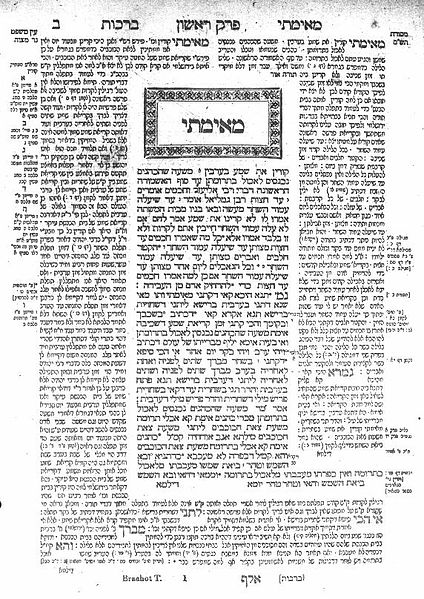
Proust, a Talmudist?
Proust’s Jewishness, as a “social” fact, might not shed any light on In Search of Lost Time, at least in the view of a pure Proustian. On the other hand, it is agreed that it could reveal to anyone interested in Judaism something of what Jewishness is, just as Proust’s Frenchness will say something about France.
Compagnon quotes a writer, Denis Saurat, the author of various works on English literature, mainly on Milton and Blake, but also on occultism. Saurat, non-Jewish but “philosemitic,” published an article on Proust in 1925, in Les Marges, from which we find, the same year, large extracts in La Revue juive. In it, Saurat asserts, in large part, that Proust’s style replicates that of rabbinic commentaries:
“The style thus defined is not French by training. Long, complicated sentences, overloaded with incidents, leading to small precious finds, disarticulated, with digressions on other subjects. A kind of foreign language, in truth. Who does not see that this style was invented, around the dawn of the Christian era, by the Jews of Babylon and Jerusalem, to comment on the sacred books. Long sentences of commentary, complicated because the exegete considers all the possible meanings of the text, overloaded with incidents made necessary by this very fact, leading to small precious finds, because the aim of the commentary is precisely to bring out the sides of the meaning, often more important than the immediate meaning, disarticulated in order to pursue at the same time all the ramifications of an idea, allowing for digressions which are constantly seeking references to other texts, to other supporting facts. Leon Pierre-Quint, in defining Proust’s style, defined the style of the Talmud and the Zohar. The short and light sentences are also in these commentaries; for if one looks at the whole passage, the short sentences are only separate fragments of an entangled period. It is the thought itself that takes these forms, the inevitable forms of commentary: add to this the repetitions and the apparent lack of immediate structure.”
And to quote a sentence borrowed from the famous passage about the cattleya flowers in “Swann in Love”: “But he was so shy in approaching her that, after this evening, which had begun by his arranging her cattleyas and ended in her complete surrender, whether from fear of offending her, or from reluctance to appear retrospectively to have lied, or perhaps because he lacked the audacity to formulate a more urgent requirement than this (which could always be repeated, since it had not annoyed her on the first occasion), he resorted to the same pretext on the following days.”
Here is how Saurat interprets the frequent use of “either/or” in Proust:
“One immediately recognizes here the primary law of the commentator: to give all possible explanations of a fact or a text, and that without having to reconcile them. A passage has, for the rabbis, several meanings, which are not necessarily connected, and which must all be noted. Now this is the most characteristic form of Proust’s mind, and he often applies the rabbinic method to texts: to the words of his characters, whose sentences have several meanings, all of which are probable, and all of which are given, between which he does not choose. It would be necessary to give pages of the Talmud and the Zohar to develop the similarities. I can only give a short passage. Do not follow the thought, but the process of thought: because, why, then, all the more reason (repeated), and again, because.”
One can indeed think of the incessant quarrel of the Sages of the Talmud and the midrashic tradition, when so-and-so says this, so-and-so that, or of other features belonging to the rabbinic dialectic[2] which Saurat probably did not know at first hand but of which he has here an intuitive perception. There would be this difference, however: Proust would then be all these rabbis, all these voices, on his own.
Proust, a Kabbalist?
Even more than a Talmudist, Proust would be, for Saurat, a Kabbalist.
In this connection, the question arises as to whether Proust really read the Zohar – which he seems to mention in a draft of In Search of Lost Time – or, for that matter, other Kabbalistic books. At the time he was writing, the translations of Jean de Pauly (later denounced by Gershom Scholem as crude falsifications of the Jewish text) were circulating in French. Franck’s Kabbalah, a very influential text hailed by Michelet, when it appeared in 1843, as “a masterpiece of criticism,” had also been reprinted several times: Proust’s access to the Kabbalah may have come through these works. Or he may have been aware of Alexandre Weill’s imaginative Mysteries of Creation[3] or the magical literature of Eliphas Levi (Alphonse-Louis Constant), author of a Book of Splendors (zohar meaning “splendor”) published in 1870 and loosely inspired by the Kabbalistic corpus. Levi, Franck and Weill, in varying degrees of seriousness, constituted the arc of the Kabbalistic signifier in the nineteenth century, and Proust could indeed have been familiar with their works.
It is mainly two aspects of Kabbalah, the doctrine of androgyny and that of reincarnation, that dominate Saurat’s argument. One of the merits of his article was, in fact, to accord these aspects their rightful place: today they are very well-known, but they were largely ignored at the time.
Saurat’s proposal rests fundamentally on his own belief in the transmigration of souls. Proust would be the heir, via this phenomenon, of the esoteric tradition of Provence, Castile and Safed. For the philologist, the historian or the journalist, this idea is certainly far-fetched, but it is perhaps permissible to grant it, in a shifted way, some interest, to admit that, confusedly, obscurely, at an archaic level, not at the level of his “social self” but at that of the depths of his being, between the two intertwined worlds of life and death, there would be in Proust, something Jewish. And that this something would then say as much about Judaism as about the writer Proust.
In the Kabbalah, reincarnation dominates human temporality: our souls derive from Adam’s and the interactions of souls, from generation to generation, would be responsible for historical vicissitudes. This belief, at first judged heretical (and contrary to the belief, explicitly present in the Talmud, of the resurrection of the dead) was finally accepted by a good part of Judaism, the influence of the Kabbalah, from the sixteenth century onwards, helping. If the theme, for example, is so frequent in Isaac Bashevis Singer, it is because all the Hasidim – and Singer came from this milieu – consider gilgul, the transmigration or derivation of souls, as a principle of their faith, almost a dogma. But what about Proust?
I see, to begin with, a hesitation, in his texts, between resurrection and reincarnation: the immortal essence of the madeleine, although in the preparatory work of Against Sainte-Beuve we read the first of these two words, is it not rather reincarnated than resurrected? And is it not the same for all those memories that punctuate In Search of Lost Time? Proust shares with Michelet – to whom he compared himself – the desire to resurrect the past, but it seems to me that this term is not entirely appropriate. It is the soul of the madeleine of Combray that comes back, in another body, not in the one, long gone, where the narrator first met it.
But there is also reincarnation itself. Saurat notes that, in Sodom and Gomorrah, Charlus’s “little laugh probably came to him from some Bavarian or Lorraine grandmother, who herself had it, identical, from a grandmother, so that it sounded like this, unchanged, for many centuries, in the old small courts of Europe, and that its precious quality was appreciated like that of certain ancient instruments that have become rare.” Reincarnation, therefore, through heredity, through what was then called, and not necessarily in a bad way (the word, as far as the Jews were concerned, was present in Proust, in Blum, in many others), race. As I write this, I am reminded of a similar passage in The Lost by Daniel Mendelsohn, a great reader of Proust: this time, it is not a “Bavarian or Lorraine grandmother” who returns, but some ancestor from the shtetl, and Mendelsohn goes back from there to ancient Israel, to Egypt and Chaldea. Heredity, transmigration of souls, secret mysteries of literary influences…
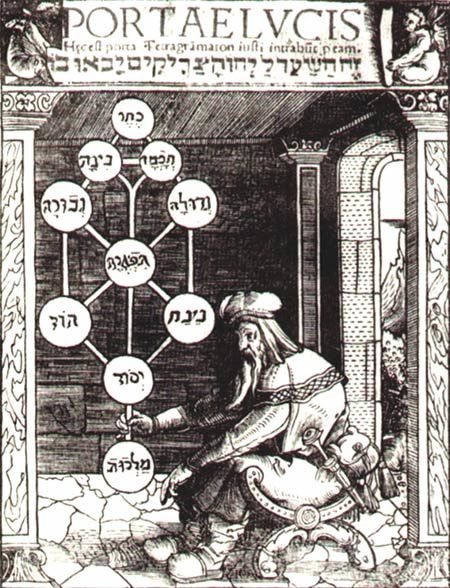
Androgyny is a theme no less obviously Proustian than that of reincarnation. Saurat’s demonstration is based on the oft-quoted passage from Sodom and Gomorrah, where the two “accursed races,” the Jews and the homosexuals, are compared. But it is not so much this comparison as such that interests him, as the following idea, which is repeated throughout the work: “He belonged to that race of human beings, less paradoxical than they appear, whose ideal is manly precisely because their temperament is feminine, and who in ordinary life resemble other men in appearance only; there where each of us carries, inscribed in those eyes through which he beholds everything in the universe, a human form engraved on the surface of the pupil, for them it is not that of a nymph but that of an epebe.”
On many occasions, in Proust’s opus, it will indeed turn out that a female soul is hidden in a male body, or the opposite: we think of Albertine. Now, Saurat maintains that “rabbinic literature is the only one that has tackled head-on these subjects of sex changes in souls.” I do not know if it is the only one, but it does indeed know about inversion, and speaks about it in a surprisingly “modern” way. Transgender activist Abby Stein tells of convincing her father, a Satmar Hasid, that her case was a possibility, by reading him a text from the Baal Shem Tov! “There is no creature that is not both male and female,” teaches the Tikkunei Ha-Zohar, and Hayyim Vital[5] teaches that the sex of the soul is not necessarily that of the body, and that a male soul can be reincarnated in a female body. This morally indifferent distortion can be overcome in various ways, especially if the “male woman,” whose soul is in reality that of a man, marries a “female man.” Now the piece of the cursed races also includes this idea that the inverted man, the one whose soul is feminine, who is a woman in a man’s body, can get along with, love even a “Gomorrah” woman!
Compagnon asserts that “the haste with which Albert Cohen and his friends reproduced Saurat’s peremptory speculations on the affinity between Proust’s style and thought and the rabbinic and kabbalistic tradition, including the migration of souls between the sexes, suggests that they were not insensitive to the better side of his imaginings, which allowed them to reclaim Proust for Judaism, even if it was a Judaism that was ill-received by the official authorities.” Proust’s antinomianism, his gnosticism, suited their Zionism – identified here, as with Scholem, with a religious anarchism as much as with a form of “patriotism.” The fact remains that Proust, if he could not read the Zohar, could even less have had access to the Shaar hagilgulim of Hayyim Vital. For the historian, the comparison could be interesting if, failing to prove the influence of the Kabbalah on Proust, it were possible to demonstrate that of an older source on both, the Platonic myth of the androgynous, for example.
For the believer, the possibility of the transmigration of souls, raised by Saurat, remains of interest: the great Jewish theologian and biblical scholar Benjamin Sommer writes in his Revelation and Authority (2015) that the presence of kabbalistic elements in Rosenzweig, who did not know these texts first hand, or even knew them at all, points to the mystery of Sinai. Perhaps the same is true of Proust. And the fact that the path of the ancestral tradition passed through the obscure forest of multiple historical influences and accidents in order to reach him would only confirm this truth.
One of the most singular dimensions of Kabbalah is the myth of the “shells” (or barks): originally, the divine light was contained in “vessels” but these shattered, so that the imperfect world is filled with sparks trapped under the “shell” of these broken vessels, the qelipot. The aim of the Jew is then to restore the world, to repair it (tikkun olam) and God himself with it, by fulfilling the commandments, whose value is above all theurgic; that of the mystic can go so far as to plunge into the heart of the shell in order to recover the divine sparks, hence the existence of antinomian currents which have taken their source in the Kabbalah itself.
I find again, dreaming a little, the shells in Proust. This powerful and intimate life that he rediscovers, imprisoned in everyday and banal objects, an uneven paving stone or a piece of madeleine, makes me think of the Kabbalistic light. And the fact that we can read Proust – a baptized Jew with a cross over his grave – as a Kabbalist, makes his own work, for the Jew, seem like an environment where holiness is hidden under profane appearances, a “palace of broken vessels”: this is the title of the Proustian saga, kabbalistic and pagan, by the Israeli writer David Shahar.
I do not know if Saurat is right and, let us insist, from a scientific point of view, this is more than doubtful. Compagnon recalls that, towards the end of his life, this heroic scholar (he had been a Resistant during the war) “converted” to Occitan language. Saurat’s philosemitism was that of a cosmopolitan, but a rooted cosmopolitan, thus echoing what Proust writes in In the Shadow of Young Girls in Flower:
“I knew that as deep, as ineluctable, as Jewish patriotism or Christians atavism in those who imagine themselves to be the most emancipated of their race, there dwelt beneath the rosy inflorescence of Albertine, Rosemonde, Andrée, a coarse nose, a protruding jaw, a paunch which would create a sensation when it appeared, but which was actually in the wings, ready to come on, unforeseen, inevitable, just as it might be a burst of Dreyfusism or clericalism or patriotic, feudal heroism, emerging suddenly in answer to the call of circumstance from a nature anterior to the individual himself, through which he thinks, lives, evolves, gains strength or dies, without ever being able to distinguish that nature from the particular motives he mistakes for it.”
The “coarse nose” here has, of course, nothing anti-Semitic about it. It is merely the outward sign, from time to time at least, of those “natural laws” (spiritual, Saurat would say, commenting kabbalistically on this passage) which Proust asserts determine us in spite of our social habits. And the stone placed by Antoine Compagnon on the tomb of Proust’s great-grandfather Baruch Weil last spring says enough, in a way that Proust was physically incapable of doing when he evoked this memory, about what French letters owe to the recognition of this mysterious heredity. This stone, placed on a tomb whose inscription has eroded, is a tikkun, a reparation, as is perhaps any book written “in search of lost time.” For a book, we read in Time Regained, “is a large cemetery where on most of the tombs one can no longer read the erased names”: for Compagnon, “it is also the small stone that one puts on the grave to remember, the small stone of the Jewish enclosure of the rue du Repos.”
David Haziza
Notes
| 1 | The session was titled “Proust sioniste” (“Zionist Proust”), a title not intended in a literal sense but rather designating the “Zionism” of Proust’s Jewish readers. For the latter, this word marked a cultural and intellectual positioning: it served more to express a certain non-religious relationship to Judaism than a real political commitment. Publications such as Menorah, La Revue juive which succeeded it, or Palestine, were representative of this Judaism in search of itself, at the same time strongly “demanding” and breaking with both Orthodoxy and the assimilationist conventions of the bourgeoisie. |
| 2 | Dialectic that belongs both to legal language (bemai peligei: how to theoretically distinguish between two practically similar explanations; mai nafka minah: what “comes out” practically from two theoretically similar explanations; hava amina: I could have said that…) and to literary exegesis (davar aher, the midrashim frequently say: that is, “something else,” “a complement to what has just been said,” “another way of understanding” this narrative…) |
| 3 | A Jewish writer from Alsace who oscillated between mysticism and rationalism and who is considered by the American researcher Maurice Samuels to be one of Proust’s “ancestors” (Inventing the Israelite – Jewish Fiction in Nineteenth-Century France, 2010). |
| 4 | The complex structure on the left is the tree of the sefirot, emanations or aspects of the divine according to the Kabbalah. |
| 5 | The disciple of Isaac Luria, who systematized his orally transmitted thought in the Etz Hayyim (Tree of Life). The school of Safed, mainly associated with Isaac Luria and Hayyim Vital, was founded in the second half of the sixteenth century. |
